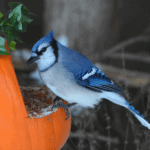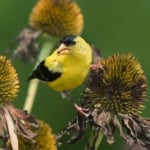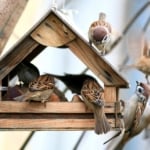What Is A Cornucopia? Meaning, Symbolism, And How To Make One!
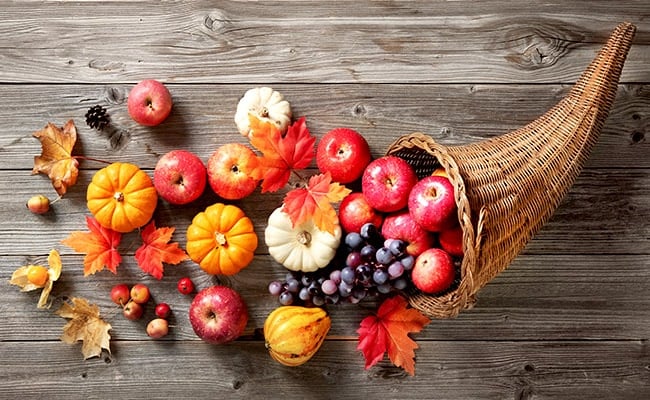
The cornucopia is a ubiquitous symbol of abundance, especially around Thanksgiving, starring in centerpieces on bountiful tables across the land. But where did the “horn of plenty” originate? A Thanksgiving cornucopia has a much longer, more elaborate history than you may imagine. Learn more about cornucopia meaning and symbolism here. Plus, learn how to make your own!
What Is a Cornucopia?
A cornucopia is a curved cone or horn-shaped basket, often woven or wicker, typically pictured as overflowing with fruit, vegetables, grains, and nuts to depict an abundant harvest. The very word, cornucopia, comes from Latin cornu (horn) and copia (abundance).
These baskets have practical use and were popular in Asia and Europe during the harvest season as they could be slung around the back comfortably for hands-free picking. Today, cornucopias in various designs are elegant and familiar Thanksgiving decorations and can come in as many styles, sizes, and variations as there are items to fill them with.
Origin of the Horn Of Plenty
The exact origin of the cornucopia isn’t well documented, but horns contributing to nourishment and abundance are found in two ancient myths. The most well known is that the infant god Zeus, while hiding from his vengeful father Kronos, accidentally broke off the horn of Amaltheia, the goat that was nourishing him as a foster mother. That broken horn poured forth with unending nourishment to sustain the young god.
In another story, Heracles (Hercules in Roman mythology) broke off the horn of the river god Achelous while wrestling. To celebrate that victory and the end of Achelous’ wrath, a goddess named Ops, which means “plenty,” ordered that the horn would overflow with the fruits and vegetables of the harvest.
In addition to these specific myths, various gods and goddesses are often depicted with cornucopias. This is especially true with deities associated with harvest, peace, generosity, or prosperity—all of which can be symbolized by these baskets.
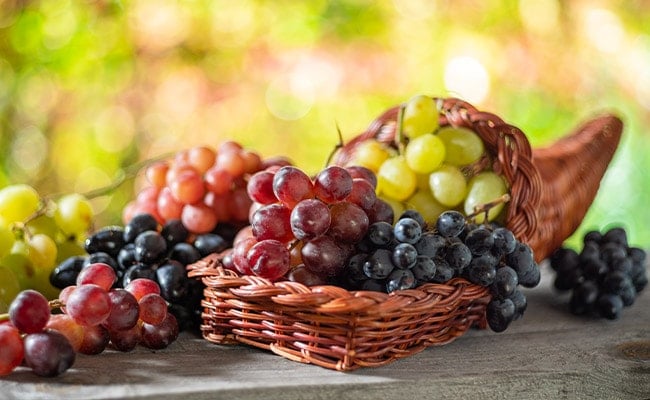
Other than mythology, horn-shaped vessels have other historical associations with abundance. In many ancient cultures, including the Greeks, Vikings, Celts, Romans, and various Germanic tribes, elaborately decorated or carved animal horns were used as drinking cups. This was a practical yet highly visible way to demonstrate one’s wealth.
In the King James Version of the Bible, Psalm 23:5 is phrased “my cup runneth over”—which is often seen as a reference to these types of drinking cups or cornucopias representing great bounty.
Interestingly, there is no record of an actual cornucopia or similarly shaped basket used by the Pilgrims or otherwise present at the first Thanksgiving in 1621. Still, it is entirely likely that such baskets may have been used as typical harvest tools, but were so common that they were not noted.
Your Thanksgiving Cornucopia
There are many unique and beautiful ways you can create a Thanksgiving cornucopia or otherwise incorporate one into your décor. First, choose the vessel—a wicker, woven cornucopia is the classic design, but there are many other styles to choose from, including ceramic, metal, or quilted cornucopias. Then, fill away!
- As a Centerpiece – For a tabletop centerpiece (or to adorn a mantle, sideboard, or other space), fill the horn with as much as you’d like and place more on the table—as if it has spilled out of the basket. Autumn harvest items such as grain stalks, miniature pumpkins and gourds, ears of corn, grapes, nuts, apples, pears, and herbs are the most popular, but you could also opt for flowers, colorful leaves, twig sprigs, and other items of the season.
- As a Serving Dish – Give your cornucopia a practical purpose by using it as a serving dish for various breads, fresh fruits, or in-shell nuts to snack on. First line the basket with a tea towel or cloth napkin as a base, spilling the fabric out of the mouth so edible items stay neat. Setting the mouth of the basket on a tray or serving platter can provide an even larger serving space. For a sweeter touch, fill the cornucopia with wrapped candies, cookies, or other treats.
- As Place Cards – Consider using miniature cornucopias as individual place card holders for a large Thanksgiving table. Small horns can be folded from construction paper or napkins in autumn colors and marked with guests’ names, then filled with party favors, individual rolls, small portions of candy, decorative leaves, or miniature faux vegetables to adorn each table setting and share abundance with everyone.
- For Thankfulness – Let your guests help fill the cornucopia by providing an empty vessel with scrolls of paper and pens nearby, and invite everyone to write what they are thankful for on a scroll to place in the cornucopia. During or after the Thanksgiving meal, the scrolls could be shared so everyone can realize and share in the great abundance of blessings they have in their lives.
- On the Kids’ Table – Give children even more to be thankful for by creating a cornucopia just for them, such as filling the horn with small toys, gifts, or other trinkets. Consider covering the kids’ table with butcher paper and filling the cornucopia with colored pencils or crayons for an instant coloring surface kids can enjoy without fear of writing on something inappropriate.
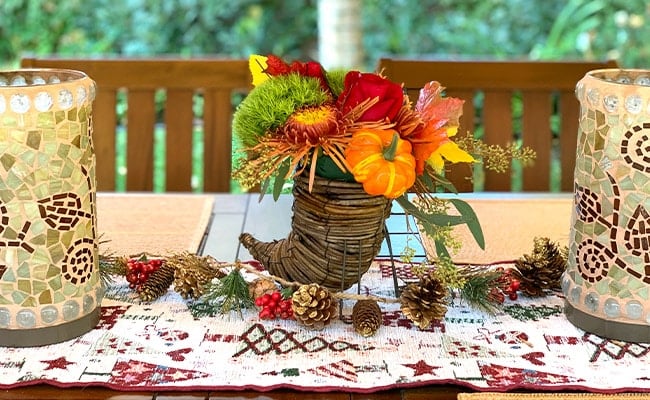
Alternative Cornucopia Suggestions
There are even more ways to be creative with a cornucopia.
- Design a themed centerpiece, filling the basket with succulents or cacti for a desert setting, or seashells for a beach theme.
- For even more abundance, consider a fully edible cornucopia by crafting the horn of plenty itself from bread or cake, or use waffle cones as individually edible cornucopias filled with treats.
With so many options and a history as abundant as the horn represents, a creative cornucopia has a place in any Thanksgiving celebration.
Join The Discussion
Do you have any additional suggestions for a thanksgiving cornucopia?
Share your thoughts with your community here in the comments below!
Related

Melissa Mayntz
Melissa Mayntz is a writer who specializes in birds and birding, though her work spans a wide range—from folklore to healthy living. Her first book, Migration: Exploring the Remarkable Journeys of Birds was published in 2020. Mayntz also writes for National Wildlife Magazine and The Spruce. Find her at MelissaMayntz.com.



